Shopping for tires can feel like shopping in a foreign country… in a foreign language. How can you care about “optimized variable pitch tread blocks” or a “directional tread pattern” if you don’t know what a tread block or tread pattern is? We're here to help you find the best tire for your car, not only for performance but also safety. That starts with a little tire education.
Regardless of the tire category type, all passenger car, SUV, CUV, and light truck tires share certain basic components.
We'll start from the inside out! Tire beads hold the tire to the rim, or the outer edge of the wheel. They’re made of copper, brass, or bronze-plated high tensile steel wires wound into a rubber band. Tire beads prevent the tire from sliding out of place when the wheel rolls.
Bead filler is a rubber compound inside the tire’s beads. It provides stability to the lower sidewall and bead area. The density and stiffness of a tire’s bead filler help to determine a tire’s performance characteristics.
The cord body gives the tire strength and transmits cornering forces from the tread to the wheel. Rubber coated fabric cord, called body plies, make up the cord body. Body plies can be made of polyester, rayon, or nylon. Polyester is most commonly used.
The inner liner (in the center of the tire diagram) is a rubber compound bonded to the inside of the cord body that retains air under pressure. It has no cord reinforcement, and it functions like an inner tube. Note, however, that modern car tires no longer have inner tubes inside them. A tire's beads, bead filler, and inner liner work together to hold air within the tire walls.
Belt plies are two or more strong layers of cord just under the tread area of the tire. The primary function of belt plies is to provide strength and stability to the tire tread.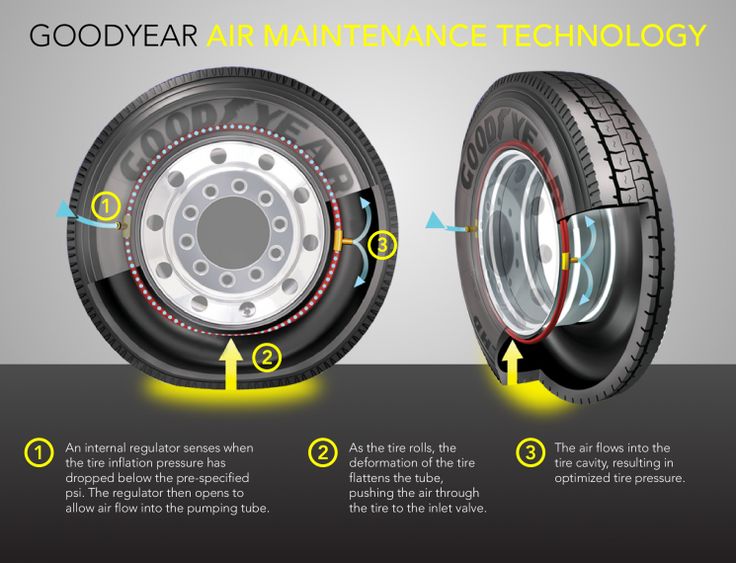 They play a role in improving tire mileage, impact resistance, and traction. Steel is the most common cord material used in belt plies.
They play a role in improving tire mileage, impact resistance, and traction. Steel is the most common cord material used in belt plies.
The area of a tire from the bead to the tread—the side of the tire—is called the sidewall. It forms a protective covering for the cord body. Information about the tire is printed on the sidewall. This information includes the tire size, load index, and speed rating. Sidewall rubber compounds are designed to resist damage from ozone, cuts, and snags.
The tread is the portion of the tire that comes in contact with the road surface. The tread's compound and its design have to balance wear, traction, handling, fuel economy, resistance, and other characteristics of the tire. Tread designs vary greatly!
For example, Destination LE2 all-season tires need to perform well in both wet and dry road conditions. They have circumferential tread grooves. These grooves allow water to pass through and stay off the tread.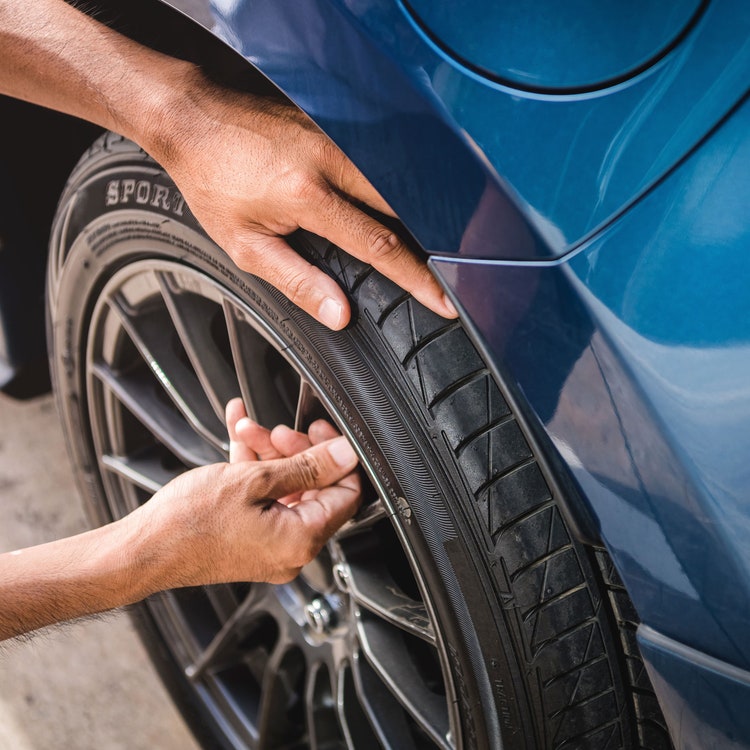
Firehawk GT Pursuit tires are also all-season tires, but they're specially designed for law enforcement and high-speed emergency use. They have an asymmetrical tread pattern. Large tread block elements on the outside shoulder support dry performance, while the inner shoulder is comprised of a greater number of smaller tread elements to improve wet weather and snow traction.
It’s best to introduce yourself to new roads with a firm grip. A firm grip starts with your tires. For more information about the parts of a tire and how to choose the right tires for your vehicle, visit your local Firestone Complete Auto Care and talk with one of our experienced techs. We're here to make sure you find the best tire for your car, not only for performance but also safety.
Nothing is more annoying than stopping to fill an under-inflated tire every week or two.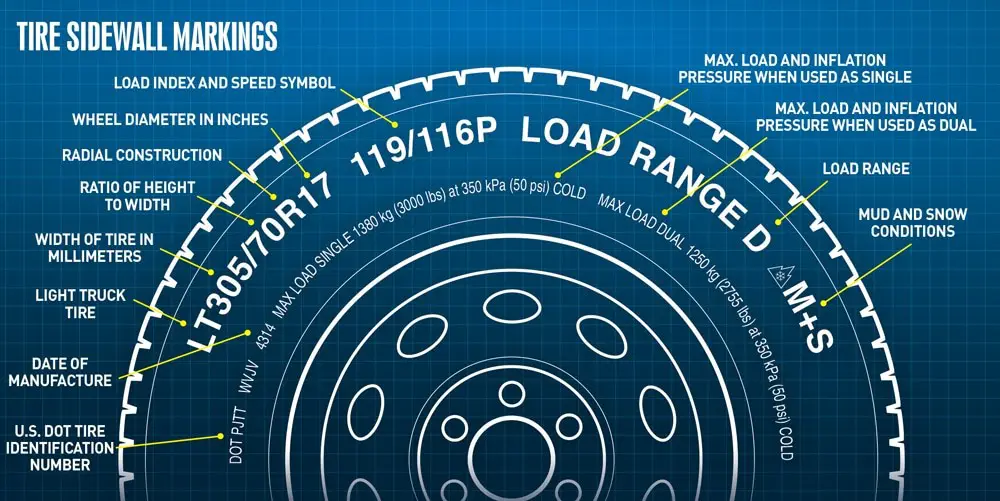 Of course the first thing you look for is a puncture or tear. It’s normal for tires to lose a few PSI (pounds per square inch) of air due to temperature changes. However, if temperatures remain consistent and your tires constantly lose pressure, there is a leak that needs attention. Age, exposure to contaminants and stress can cause parts of your tire and rim (wheel) to fail. But what do you do if your tire is not visibly damaged? Consider that one of these problems is causing your flat tire:
Of course the first thing you look for is a puncture or tear. It’s normal for tires to lose a few PSI (pounds per square inch) of air due to temperature changes. However, if temperatures remain consistent and your tires constantly lose pressure, there is a leak that needs attention. Age, exposure to contaminants and stress can cause parts of your tire and rim (wheel) to fail. But what do you do if your tire is not visibly damaged? Consider that one of these problems is causing your flat tire:
On This Page
Running over any sharp object can puncture a tire. A tiny nail can puncture a tire, then fall out, causing a slow two-to-three PSI leak per week.
Made from rubber, valve stems can deteriorate over time. They also can be damaged from hitting a curb or even from an automatic car wash brush. Keep your valve stems clean and always replace the valve cap, but don’t overtighten it. Overtightening the cap can damage the valve core. Hand-tight is tight enough.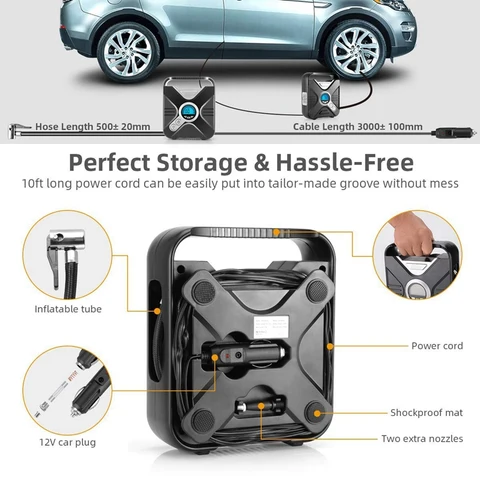
A ripped or torn tire is unsafe, especially if the rip is on the sidewall. Driving on a weakened tire, even if the leak is minor, is dangerous. Compound that with an under-inflated tire that can overheat and you’ve got a prescription for a blowout.
The bead is where a tire seals itself to the rim. The bead on older tires, or tires that have “dry-rot,” may have decreased elasticity and no longer seal properly. Beads can also be damaged when a tire is mounted or dismounted without the use of tire lube and beads can become chaffed, due to a corroded rim. The only fix for a damaged bead that cannot seal to the rim is a new tire.
Corrosion where the rim meets the tire bead is a common cause for a tire losing air pressure. Die-cast aluminum and magnesium alloy wheel are more susceptible to corrosion. Be sure your tire technician inspects the area where the wheel and bead seal before installing new tires. As well as being unsafe, even a new tire will never properly seal to a badly corroded wheel.
Often overlooked is wheel porosity, where air leaks through the rim itself. Usually caused by a poor casting or corrosion from using incorrect wheel weights, there is a proper, accepted way to repair this type of leak. Don’t inject your tire with tire sealant to fix a leaky rim. It can be extremely difficult to clean out and can ruin a repairable tire or tire pressure monitoring system sensor.
You are playing a dangerous game if you think that by over-inflating a tire with a slow leak, you will increase the time between fills. Besides a rough, noisy ride due to stiff sidewalls and tread, an overinflated tire wears quicker, and overall tire performance suffers. Rigid, overinflated tires are unstable, lose traction easily due to reduced tire-read-to-road contact area (think of a basketball) and make sidewalls vulnerable to blowouts when hitting a pothole.
Anything that can damage a tire or rim — punctures from a nail, metal fragments, broken glass, a piece of wood, a cracked rim or sidewall rips from hitting potholes or a curb — are considered road-hazard damage.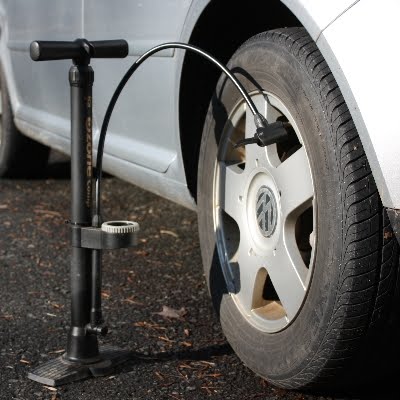 Only your tire technician can determine which of these are repairable.
Only your tire technician can determine which of these are repairable.
So, as you can see, there are a lot of reasons why your tire can go flat. Inspect your tires and check air pressure at least once a month. Properly inflated tires last longer, wear more evenly and are safer to drive on.
Bob Lacivita
Bob Lacivita is an award-winning ASE and General Motors auto technician, educator and freelance writer who has written about DIY car repairs and vehicle maintenance topics. His work has been featured in The Family Handyman, a Reader's Digest book and Classic Bike Rider magazine. He has been a career and technical educator for 25 years teaching automotive technology, as well as writing state, federal and organizational foundation grants. He also helped design a unique curriculum delivery model that integrates rigorous, relevant academic standards seamlessly into career and technical education.
The production of flexible tires for vehicles is made possible by vulcanization technology. Today, no vehicle can do without pneumatic tires, from a bicycle to an airplane.
Today, no vehicle can do without pneumatic tires, from a bicycle to an airplane.
The prototype of the modern tire appeared in the century before last as an attempt to protect horse-drawn carriages from bumps in the road. Pneumatic tires are ubiquitous these days and provide safe traffic in a wide variety of conditions. At the same time, although all tires are similar to each other, the design of different models can vary significantly.
Regardless of the type of construction, any tire remains a shell of rotation - invariably toroidal. Its power base is always a multilayer rubberized cord fabric, protected by sidewalls and a rigid tread. So that the tire can be fixed on the wheel rim, it is equipped with almost non-stretching beads, which are given additional strength by wire rings. Any tire is completely sealed. It acquires the necessary elasticity, and therefore efficiency, only when the air pressure inside it exceeds atmospheric pressure. That is why the tire is called pneumatic: “pneumaticos” in Greek means “air”.
The construction of modern tires includes the following elements:
 The tread is designed in such a way that it effectively removes dirt, rainwater and snow from the contact patch and thus makes driving easier.
The tread is designed in such a way that it effectively removes dirt, rainwater and snow from the contact patch and thus makes driving easier.
The main component of a tire is always rubber. It is made from natural and artificial rubbers. Cord fabrics, in turn, are made from metal fibers (metal cord) and threads based on textiles and polymers. Metal cord is used in the manufacture of truck tires, while textiles and polymers are used in the production of passenger cars and light trucks.
Based on the orientation of the cords, tires are divided into bias and radial.
These tires are characterized by the fact that the cords are arranged diagonally, at an angle of approximately 50 degrees.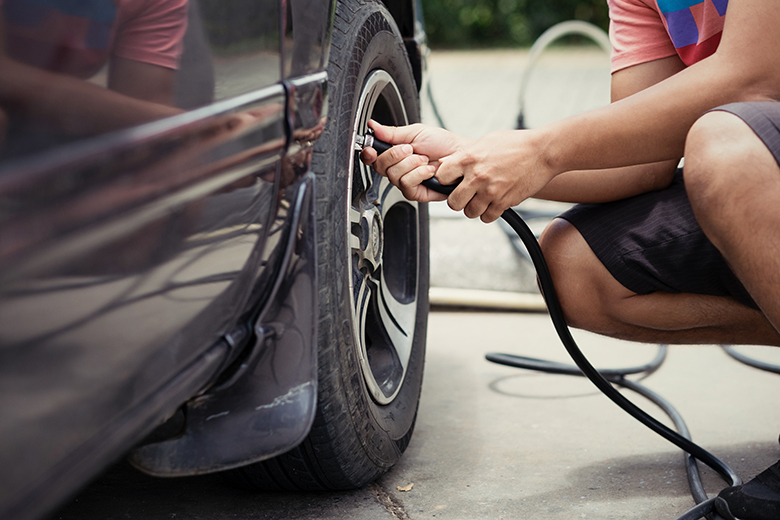 In this case, the threads of two adjoining carcass layers always intersect at the same angle - approximately 100 degrees. Since the layers work in pairs, their total number in the bus is always even. Bias tires are characterized by a very thin breaker - usually two-ply, if we are talking about a passenger tire. In this case, the breaker only slightly strengthens the main frame. The diagonal orientation of the cords allows the carcass to stretch in two directions - in the transverse and longitudinal - which ensures high elasticity of the tire.
In this case, the threads of two adjoining carcass layers always intersect at the same angle - approximately 100 degrees. Since the layers work in pairs, their total number in the bus is always even. Bias tires are characterized by a very thin breaker - usually two-ply, if we are talking about a passenger tire. In this case, the breaker only slightly strengthens the main frame. The diagonal orientation of the cords allows the carcass to stretch in two directions - in the transverse and longitudinal - which ensures high elasticity of the tire.
The thick and strong sidewall is another distinguishing feature of the diagonal tyre. In this regard, the sidewall differs little from the tread. Thanks to this feature, the tire is practically not deformed, so it is resistant to impacts and cuts, able to withstand significant loads and retains its properties even at relatively low pressure inside.
The bias tire still deforms slightly during rolling. This means that the angle between the cords of two adjacent carcass plies is constantly changing. The result is internal friction, which, in turn, is accompanied by the release of heat. Heat must be dissipated. To do this, the sidewall of the tire is made high: it accounts for at least 4/5 of the total height of the diagonal tire.
The result is internal friction, which, in turn, is accompanied by the release of heat. Heat must be dissipated. To do this, the sidewall of the tire is made high: it accounts for at least 4/5 of the total height of the diagonal tire.
In these tires, the cords in the carcass do not intersect and are located radially, that is, from one side to the other. Cord threads in each layer of these tires are arranged in parallel. However, the breaker, even in radial tires, has a diagonal design. The breaker in diagonal tires is particularly strong and consists of at least four layers of polymer or two layers of steel cord.
The orientation of the cords in the carcass of such a tire does not allow it to stretch excessively across. The breaker prevents longitudinal stretching.
The radial arrangement of the cords reduces the stress that occurs in them during tire operation by about half. This also makes it possible to halve (when compared with diagonal models) the number of layers in the carcass, which significantly reduces the weight of radial tires.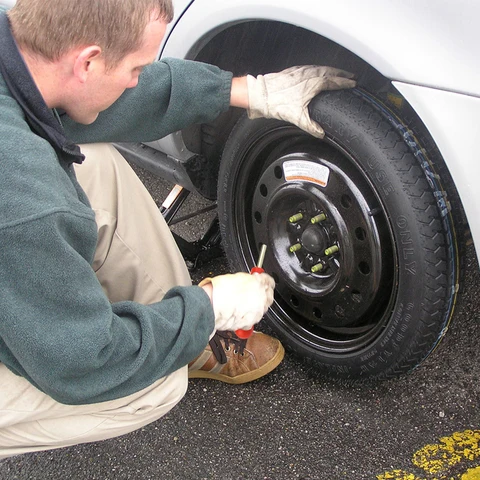 Due to the small thickness of the carcass, radial tires are more elastic, less subject to internal friction, so during their operation they do not generate as much heat as in the case of diagonal models. This feature allows you to make the tread thicker and its pattern deeper, thereby increasing the durability of the tire.
Due to the small thickness of the carcass, radial tires are more elastic, less subject to internal friction, so during their operation they do not generate as much heat as in the case of diagonal models. This feature allows you to make the tread thicker and its pattern deeper, thereby increasing the durability of the tire.
The design of the radial tires allows for free variation of the height and width of the profile. Such tires are divided into full-profile, low-profile and ultra-low-profile. The low profile in some situations makes the vehicle more stable and improves its handling. In addition, radial tires have minimal rolling resistance and therefore reduce fuel consumption.
The main disadvantage of radial tires is their rolling rigidity. These tires are good at transmitting vibration that occurs on rough roads. This disadvantage was especially noticeable on obsolete vehicles. Suspension modern models are usually able to dampen the vibrations that occur when rolling.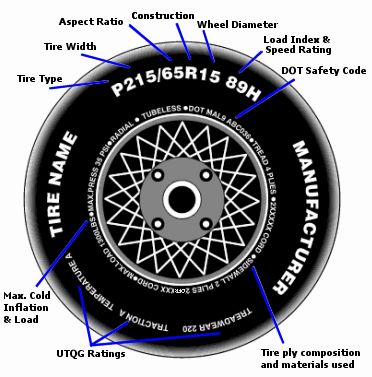
Another disadvantage of radial tires is that they are easy to puncture, impact or cut. The side tread, which is equipped with some tire models designed specifically for off-road driving, helps to partially protect the tire.
Bias tires are almost never used by car owners today. Now such models are usually put on trucks and special equipment. As a rule, radial tires are now installed on passenger cars.
Finally, tubeless tyres. They are the most commonly used today because they are light, reliable, and easy to use. A punctured tube is able to release all the air pumped into it in a few moments, while the pressure in a tubeless tire drops gradually after a puncture. In the latter case, the risk of an accident is significantly reduced.
Konstantin Ishchenko
experienced motorist
Much depends on the condition of the suspension, springs and shock absorbers, but tires provide direct grip on the road. Wrong or worn tires can cause accidents. In this article, we will tell you how to avoid this.
Wrong or worn tires can cause accidents. In this article, we will tell you how to avoid this.
In spring - from winter to summer. There are no strict requirements in the regulatory documents: it is recommended to use winter tires from December to February, and summer tires from June to August. There are requirements for studded tires: they cannot be used from the first of June - for this they can be warned or fined 500 R. From winter to summer, they change shoes at an average daily temperature above +7 ° C. After this mark, winter tires wear out quickly and hold the road poorly.
There are requirements for studded tires: they cannot be used from the first of June - for this they can be warned or fined 500 R. From winter to summer, they change shoes at an average daily temperature above +7 ° C. After this mark, winter tires wear out quickly and hold the road poorly.
Rules of the Customs Union "On the safety of wheeled vehicles"
In autumn - from summer to winter. It's time to change tires if the average daily temperature drops below +10 °C: summer tires become dull, grip becomes worse. In autumn, it is much more difficult to sign up for a tire fitting: the closer the frost, the longer the appointment. People are afraid of ice, the prospect of hitting someone else's car or flying into a ditch.
What to do? 02/21/20
Wheels scratched in my car service
Car tires are a consumable item. In addition to seasonal replacement, it is important to replace them as soon as they are worn out or seriously damaged..jpg)
When the tire is worn. Each car tire has a wear indicator - a special jumper between the tread islands. As soon as the tread wears off and matches the level of at least one of the indicator jumpers, it's time to change the tire. Such a tire is dangerous, especially on wet surfaces.
/car service/
How to save on the operation of the machine
Insufficiently high tread poorly removes water from the contact patch of the tire with the roadway. Where you can confidently drive 70–80 km/h on new tires, on worn tires you can lose control of the car already at a speed of 55–60 km/h.
Indicator bar on a tire that has been through a season and a halfSome manufacturers apply their own wear indicators in addition to the standard ones. For example, on Nokian tires, numbers are cut in the middle of the tread: the larger the number, the deeper the cut.
A relatively new tire will have a lot of numbers, a worn one or two will remain - the rest will be erased. A drop with a cross is applied to the sidewall of the Continental tire. As soon as it is worn down to half, the tire should be considered worn out and replaced. But all these are rather exceptions - most tires do not have such indicators.
A drop with a cross is applied to the sidewall of the Continental tire. As soon as it is worn down to half, the tire should be considered worn out and replaced. But all these are rather exceptions - most tires do not have such indicators.
Wear may be uneven. If the tire has been inflated, the center of the tread will be worn off. If the tire pressure was too low, it will be relatively fresh and the sidewalls of the tread will be worn out.
Non-standard wear indicators. From left to right: Nokian with numbers - summer and winter, Continental summer - with a drop and a cross Tire that was pumped over: wear on the central part of the tread is much strongerIt also happens that either the inner or outer side of the tread wears out on one wheel. This means that the camber is broken - the angle of the wheel relative to the vertical plane. In this case, it is important to sign up for wheel alignment - this is a service during which the wheel alignment angles are adjusted.
It happens that the angles of the wheels are not adjusted.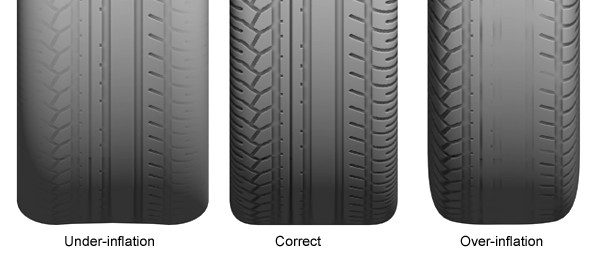 For example, if the car has been in a serious accident and its power parts of the body or suspension parts are deformed. In this case, you will have to eliminate these malfunctions, and then go to the wheel alignment stand again.
For example, if the car has been in a serious accident and its power parts of the body or suspension parts are deformed. In this case, you will have to eliminate these malfunctions, and then go to the wheel alignment stand again.
/sud-autoservice/
As I sued the auto service
Sawtooth or comb wear occurs on winter tires if the toe-in is broken - the angle of the wheel position in the horizontal plane. Sign up for a wheel alignment so that the same wear does not appear on the new tire.
Uneven tread wear. The tire was on a wheel with unadjusted camber Comb-shaped tread wear. Source: mashintop.ru When the tire is damaged and it is noticeable. The tire is quite easy to damage: cut the sidewall, run into a piece of reinforcement or get hit, in place of which a hernia will come out. All sidewall damage is a good reason to buy a new tire: repairs will be expensive and ineffective. Damage to the working part of the tire - the tread - is less critical.
When damage is present but not visible. Hidden damage may appear on the back of the wheel. For example, a driver caught a hole, felt a good hit, got out, saw that everything was in order, and drove on. And on the reverse side, a piece of rubber was torn out and the cord became visible - the metal carcass of the tire. Such damages are found only when inspecting the chassis or at a tire fitting, and this is bad: they can cause an accident or serious damage to the car.
Service life of car tires. The tire life recommended by most manufacturers is five years, but this does not mean that they cannot be used for the sixth year. The expiration date is not limited by any documents.
GOST R 52900-2007
Tire manufacturers estimate tire service life differently. Nokian provided the most detailed explanation: “Tire life is not defined by law, but tires can only be considered new if they have been manufactured within the last five years. The recommended tire life is 6 years and the maximum is 10 years. Then the tire loses its consumer properties: grip deteriorates, vibration may appear on the body or steering wheel.
The recommended tire life is 6 years and the maximum is 10 years. Then the tire loses its consumer properties: grip deteriorates, vibration may appear on the body or steering wheel.
5 years
tire life recommended by most manufacturers
Storage location - less than a meter away from direct sunlight and heaters. In the sun, near the battery and in the rain, the tire will quickly lose its properties: the rubber will dry out and collapse. Permissible temperature - from -30 to +35 ° C, humidity - 50-80%. Do not leave the wheels dirty; they must be thoroughly washed before seasonal storage. Tires can be stored under a canopy in the open air for no more than a month.
GOST 54266-2010
The method of storage depends on the set: either tires separately or wheels as an assembly. Tires up to 205 mm wide can be stored in even stacks up to 2 m high. Tires from 210 mm are stored vertically - on edge. Every three months, all tires, regardless of width, should be rotated to change the footprint.
Every three months, all tires, regardless of width, should be rotated to change the footprint.
GOST does not explain how to store the wheels as an assembly, but Nokian has a visual manual for storage. Continental recommends hanging wheels by rims or storing them in a stack, similar to tires, turning them over every 4 weeks. It is advisable to reduce the air pressure in the tire to 1-1.5 atm and not make stacks of wheels - a tire plus a disk - more than four pieces.
Nokian Tire Storage TipsPDF, 2.1 MB
Featured Articles for Motorists
How to drive without fines and not overpay for car maintenance - in our mailing list along with other materials about money
First of all, you need to decide which tires are suitable. All important characteristics are written on the sidewall of the tire.
The dimensions of the tire are important to consider when selecting it for a specific car and rim. All options provided for by the design of the car are written on special plates.
All options provided for by the design of the car are written on special plates.
Depending on the brand of car, they can be found on the gas tank flap or on the B-pillar in the driver's doorway. The recommended tire pressure is also written here.
/usedcar/
How to buy a used car
Decal with Mini John Cooper Works tire parameters in the doorway: size and recommended pressure at different loads Decal on the gas tank flap of the Skoda OctaviaTire sizes are indicated in the format xxx/xx Rx. They are on the sidewall of the tire.
The first parameter is the tread width in mm. The size step is 10 mm, always 5 at the end. Next is the tire profile, or its height as a percentage relative to the width. The width of a tire with parameters 235/55/R16 is approximately 129 mm, and for a tire 195/55/R16 it is 107 mm.
R - an indication of the type of tire, in this case, that it is radial. There are also diagonal ones, but this is an outdated design.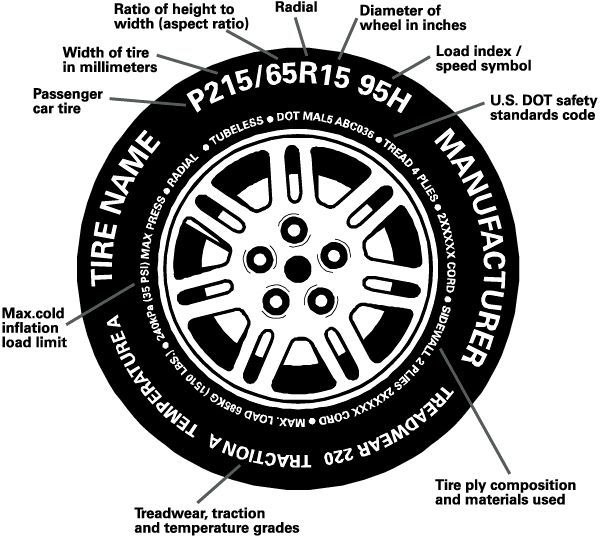 These have not been used for cars for a long time. The difference is in the design of the cord. A popular misconception is that R is a radius.
These have not been used for cars for a long time. The difference is in the design of the cord. A popular misconception is that R is a radius.
The last two digits are the diameter of the rim in inches, on which the tire can be placed.
It is undesirable to deviate from the tire parameters recommended by the car manufacturer. This can adversely affect handling, as well as cause the tire to rub against the wheel arch or suspension parts: this will damage the tire and increase the likelihood of an accident.
It happens that on the front and rear axles from the factory there are disks for rubber of different sizes. Usually we are talking about the width - the rear wheels can be wider than the front. In the people, such a set of disks is called a different-wide one.
Tube or tubeless construction. Previously, a car wheel consisted of three main parts: a disc, a tube, and a tire. The tire was responsible only for traction and overall strength, the chamber was a container for air. This design had serious drawbacks:
This design had serious drawbacks:
Now you can find a tube tire on a car only in a museum or in your grandfather's garage: the technology is outdated.
Modern tubeless tires do not have these drawbacks. Special protrusions in the disks — hubs, for which the tire clings, help to maintain the tightness of the tubeless wheel.
Manufacturers still mark tubeless tires with a special tubeless mark, and those intended for use with a tube - tube type, but now these are only rare domestic models Cord construction type. Each tire is multi-layered, a single rubber product will not be able to provide the desired shape and strength. Therefore, inside the tire there is a cord - a kind of carcass.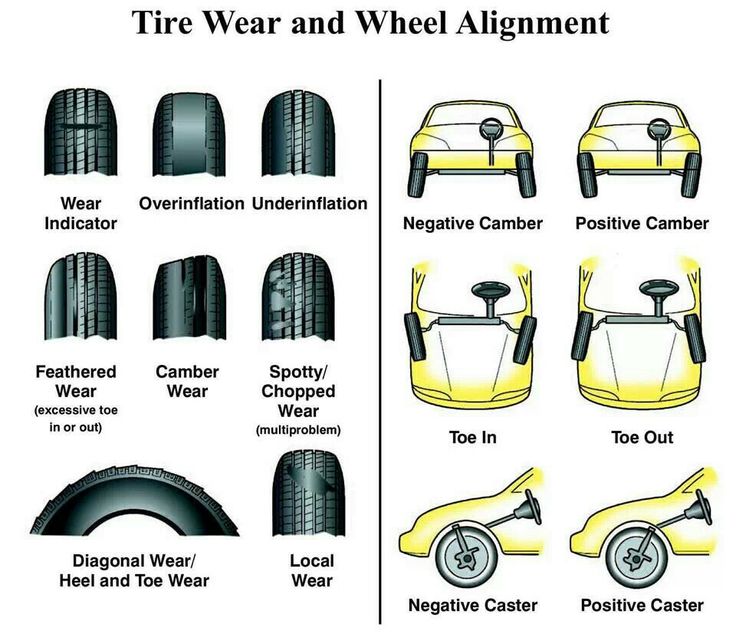 The cord can be metal, synthetic fibers or textile threads. According to the method of laying the cord, tires are divided into radial and diagonal.
The cord can be metal, synthetic fibers or textile threads. According to the method of laying the cord, tires are divided into radial and diagonal.
| Bias tire | Radial tire |
|---|---|
| 2 or more cords | 1 ply cord |
| Smaller footprint | Larger road contact patch |
| Tire heavier than | Lighter tire |
| Used on commercial vehicles | Used on passenger cars |
| Cheaper than | Expensive |
Bias
radial tire
2 layers of cord or more than
1 layer of cord
Less contact stain with an expensive
Contact stain with an expensive
Tires heavier than
are used on commercial equipment
used on cars
Cheaper
More expensive
Radial tire cords are parallel to the wheel circumference, on top of each other. For diagonal tires, the cord layers overlap each other diagonally. Source: Kolobox
For diagonal tires, the cord layers overlap each other diagonally. Source: Kolobox DOT marking. The name comes from the American Department of Transportation - an analogue of our Department of Transportation. In 1978, this department approved mandatory labeling for all automobile tires, which includes Treadwear, Traction, and Temperature grades marked on the sidewall. Now most manufacturers use this system, selling tires without such marking is illegal in the USA.
Treadwear. Some people want tires to last as long as possible, others want good grip. So far, these qualities have not been learned to combine in one tire.
The wear rate of a tire is indicated by the Treadwear index. Typically, for products for passenger cars, this parameter ranges from 100 to 600. In terms of kilometers, this is approximately 10,000-15,000 km per hundred points. For example, index 240 corresponds to 24,000-36,000 km.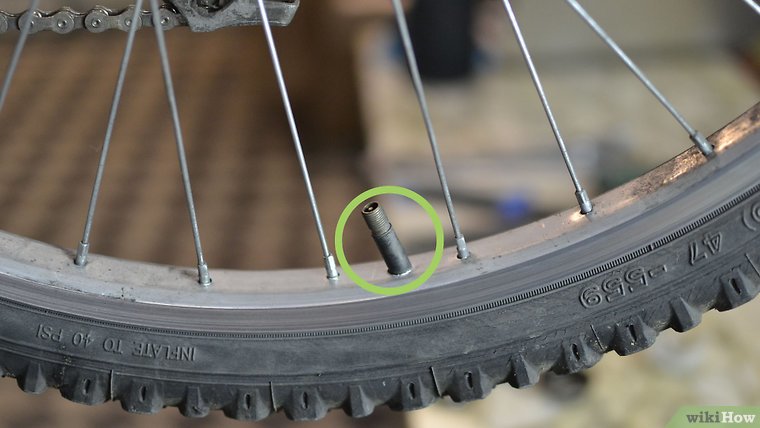 At the end of the range there will be tires that were used with a calm driving style.
At the end of the range there will be tires that were used with a calm driving style.
Traction also shows the grip class, but unlike Russian traffic rules and technical regulations, the classification is based not on distance in meters, but on the deceleration coefficient - G, which the tire can provide. According to Traction, all tires are divided into classes according to their ability to effectively stop a car on wet asphalt and concrete: from the best AA to the worst C.
| Class | G on asphalt | G on concrete |
|---|---|---|
| AA | More than 0.54 m/s² | 0.38 m/s² |
| A | More than 0.47 m/s² | 0.35 m/s² |
| B | More than 0.38 m/s² | 0.26 m/s² |
| C | Less than 0.38 m/s² | 0.26 m/s² |
Grade AA
G on asphalt
More than 0.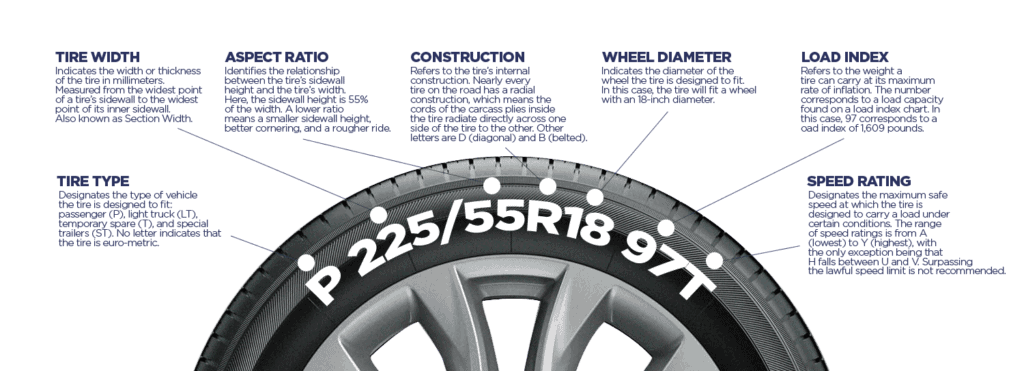 54 m/s²
54 m/s²
G on concrete
0.38 m/s²
Grade A
G on the asphalt
more than 0.47 m/s²
G on concrete
0.35 m/s²
111111111112 G on asphalt more than 0.38 more m/s² G on concrete 0.26 m/s² Grade C G on the asphalt less than 0.38 m/s² G on concrete 0.26 m/s² Temperature characteristic, Temperature. All tires are divided into three classes according to the resistance to heat generation during movement: A, B and C. Class A tires effectively remove heat at speeds over 185 km / h, class B - from 160 to 185 km / h, class C - from 137 up to 160 km/h. For passenger cars, there are almost no tires on sale, except for class A. Run flat. This rubber has a thick and stiff sidewall. It can be driven up to 80 km at speeds up to 80 km/h after a puncture or side cut with a complete loss of pressure. It is important that the machine is equipped with a tire pressure system, otherwise the driver may not recognize a flat tire, exceed the recommended speed, or drive more than 80 km, which at best will lead to damage to the rim, and at worst, to an accident. Many vehicles come with runflat tires from the factory. Especially on those who do not have a spare tire. Such tires are 1.5-2 times more expensive than ordinary ones, they make driving less comfortable: due to the hard sidewall, such rubber smooths out bumps much worse and is heavier than conventional tires. But you don't have to call a tow truck: you can almost always get to the tire shop on your own. If you drive on a relatively flat road, there will be no damage to the alloy wheel: it is still a few centimeters from the road surface. /otozvali/ How to repair a car under a recall campaign Load and maximum speed indices. Load Index is a two- or three-digit number that indicates the maximum weight that a tire can support. Speed index Maximum speed, km/h If you want to know how to read the load index, find your value in the table. 1120 113 1150 114 1180 115 1215 116 1250 117 1285 118 1320 119 1360 120 1400 121 1450 122 1500 
 The speed index is denoted by a Latin letter. It shows the maximum allowable speed that the tire can withstand. All indices are summarized in tables.
The speed index is denoted by a Latin letter. It shows the maximum allowable speed that the tire can withstand. All indices are summarized in tables. How to read speed index
Speed index Maximum speed, km/h L 120 M 130 N 140 P 150 Q 160 R 170 S 180 T 190 U 200 H 210 V 240 W 270 Y 300 Z 300+ 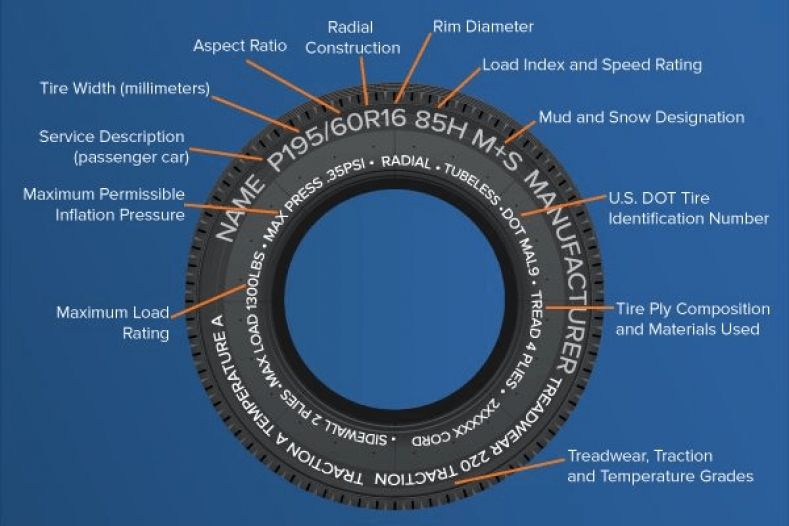
Load index Weight per tire, kg Load index Weight per tire, kg Load index Weight per tire, kg 62 265 83 487 104 900 63 272 84 500 105 925 64 280 85 515 106 950 65 290 86 530 107 975 66 300 87 545 108 1000 67 307 88 560 109 1030 68 315 89 580 110 1060 69 325 90 600 111 1090 70 335 91 615 112 1120 71 345 92 630 113 1150 72 355 93 650 114 1180 73 365 94 670 115 1215 74 375 95 690 116 1250 75 387 96 710 117 1285 76 400 97 730 118 1320 77 412 98 750 119 1360 78 425 99 775 120 1400 79 437 100 800 121 1450 80 450 101 825 122 1500 81 462 102 850 123 1550 82 475 103 875 124 1600
Pressure index is another name for the load index.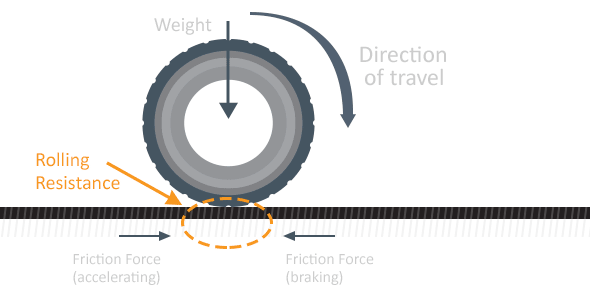
Euro label. Manufacturers put special stickers on tires. They have three parameters that are not written about on the bus itself. These stickers appeared in 2012. Since then, they have been on any tire sold in the EU.
The sticker complies with EC Regulation 1222/2009. This is a complex document with formulas and parameters like rolling resistance - it does not have the usual values like fuel consumption or braking distances. The sticker describes the tire according to three characteristics: noise level, fuel economy class and wet grip class.
/top-economic-cars/
11 economical cars for everyday driving
Noise level shows the noise level in decibels. One black sound wave is 3 or more decibels below the 2016 European norm. Two waves - at the normal level or quieter, but less than 3 decibels. Three - noisy tire, out of limit.
Fuel economy class. A is the most economical. The lower the class, the more the tire resists rolling and the higher the fuel consumption. There is a 7.5% difference in fuel consumption between the most economical class A tire and the most "wasteful" class G. That is, for an average car with a consumption of 10 liters per 100 km and an annual mileage of 25,000 km, class A tires will save up to 187 liters of fuel - 8000 R.
The lower the class, the more the tire resists rolling and the higher the fuel consumption. There is a 7.5% difference in fuel consumption between the most economical class A tire and the most "wasteful" class G. That is, for an average car with a consumption of 10 liters per 100 km and an annual mileage of 25,000 km, class A tires will save up to 187 liters of fuel - 8000 R.
Road grip. The same letters, but without color indication. This estimate was obtained when checking the braking distance on asphalt. The shorter the stopping distance, the closer the letter is to the beginning of the alphabet. The difference between A and G is more than 18 meters: A is the minimum stopping distance, B is plus 3 meters to A, C is plus 7 meters to A, D is plus 10 meters to A, E is plus 12 meters to A, F is plus 18 meters to A.
New tire sticker Color markers on tires. There are another colored stripes on the tire tread - these are technological marks, they are of no use to the buyer.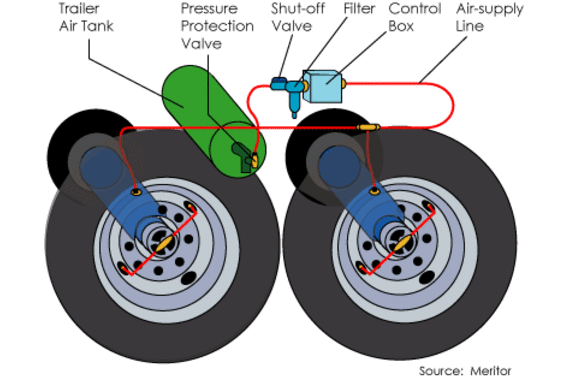 These drawings guide the production line, and they can also show the batch and release date.
These drawings guide the production line, and they can also show the batch and release date.
The most pedantic car owners may try to buy a set of new tires with identical stripes, but it is better to focus on the stamp with the release date on the sidewall.
Features of the choice of all-weather tires. Theoretically, they can be ridden all year round. The rubber compound works in the temperature range from -7 to +15 °C. In severe frosts, rubber hardens like summer tires at temperatures below +10 °C, and in hot weather it becomes softer, like winter tires at temperatures above +7 °C. In any case, all-season tires are not suitable for either hot asphalt or ice ruts.
All-season tires are chosen when they want to save on tire fitting and buying an extra set of tires. This is true for crossovers and SUVs with relatively low annual mileage.
Features of the choice of summer tires.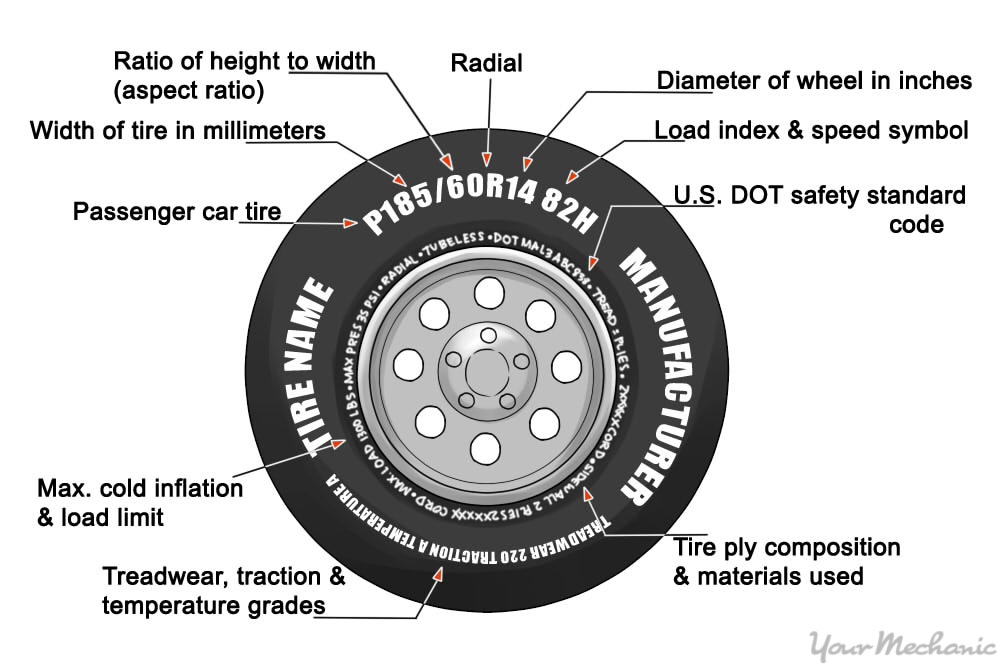 There are models for quiet city driving. Such tires will help save fuel, please with a low noise level and will last three to four seasons. At the same time, they will not tolerate overheating, will not provide perfect grip on the road and will not allow you to drive a car with great comfort.
There are models for quiet city driving. Such tires will help save fuel, please with a low noise level and will last three to four seasons. At the same time, they will not tolerate overheating, will not provide perfect grip on the road and will not allow you to drive a car with great comfort.
The opposite - tires for those who like to push the gas to the floor. Such tires will make noise, increase fuel consumption and wear out in one or two seasons. In return, the driver will get excellent grip and driving pleasure.
Features of the choice of winter tires. There are three types of winter tires.
studded tires are good for driving on ice and packed snow. They have relatively hard rubber, deep tread and studs. And they also hold the road well on asphalt: the spikes have been hidden in the tread for a long time.
Ideal conditions - ice cover above -15°C. The ice is soft enough for the spikes to grip most effectively.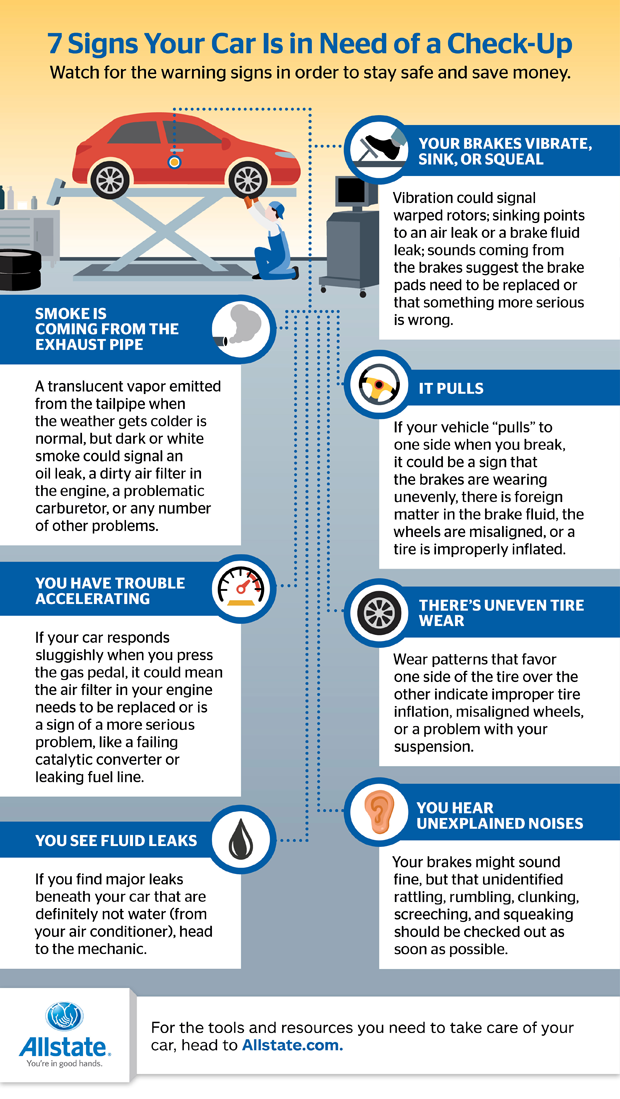
Disadvantages: they are very noisy, they have a low speed index. Usually, you can drive on studded tires no faster than 160-180 km/h. And they are also banned in many European countries because they spoil the asphalt.
Scandinavian type friction tires, aka Velcro, without studs and made for harsh winters. Rough tread pattern, soft rubber compound and many sipes - horizontal slots on the islands of the tire tread.
Ideal conditions are snow and ice below -15°C. They are noticeably quieter, you can move at a much higher speed on them.
Disadvantages: such tires wear out quickly, almost do not hold the car on melted smooth ice at temperatures above -5 °C. There is a small distance between the tread islands, such tires do not drain water well from the contact patch with the roadway.
Alpine type friction tires without studs and made for mild winters. There are 1.5-2 times fewer sipes on the tread, the grooves for water drainage are much wider. This is the most wear resistant winter tire.
This is the most wear resistant winter tire.
Ideal conditions - puddles, asphalt, -5 to +3 °C. Well remove water from the contact patch with the roadway.
Disadvantages: poor grip on any ice and packed snow.
According to the Rules of the Road, different tires cannot be put on one axle of a vehicle. This is considered a malfunction in which the use of a car is prohibited.
p. 5 of the Traffic Regulations of the Russian Federation: wheels and tires
At the same time, the rules do not prohibit installing tires of different brands and models on different axles of the same car, but it’s better not to do this. The car and all its systems are designed for the same tires with the same grip.
This is especially true for modern cars with many electronic assistants: stabilization systems, brake force distribution. You can drive on such a combination of tires, but no one knows how the car will behave in an extreme situation.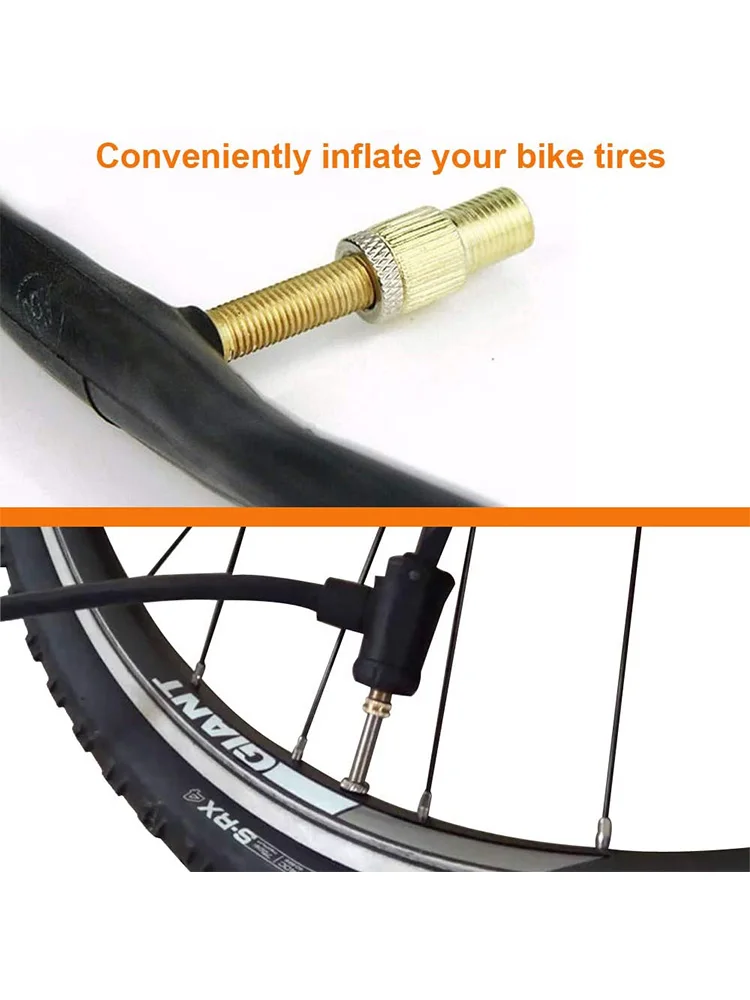
Like everywhere else, there are premium brands and there is something cheap. But cool brands have failed models, while budget brands have successful ones.
There is a lot of research and testing behind famous brand tires. Before entering the market, large companies test each new model in the most extreme conditions. Tires can be rolled on arctic ranges or in the desert.
Often, rubber is tested in the conditions of sports competitions and only then the technology is sent to the mass market. The more famous the manufacturer and the more expensive its products, the greater its budget for the development of new models.
There are also very cheap tires, often from China. They can directly write that they copied the tread pattern of a prestigious model, but this is not enough: there is also a rubber composition, cord design and other parameters.
Prices for tires of the same size may differ by multiples. The smaller the profile and the larger the width, the greater the difference.
To look at something other than the brand and choose what you need, there is an algorithm:
Specialized shops. There is a large selection, catalogs of manufacturers and competent advice. This will appeal to those who buy car tires for the first time or are simply not very interested in the technical side of cars. There is a service here - there will be a guarantee for tires, there is tire fitting and seasonal storage. The one-stop principle works: you can arrive on spikes and leave on a new summer and with an empty trunk.
The one-stop principle works: you can arrive on spikes and leave on a new summer and with an empty trunk.
Online hypermarkets and warehouses. Rubber is sold by large Internet sites and small shops. The option is suitable for those who want to find cheaper, are ready to take risks and waste time for this. Here, the entire responsibility for checking the parameters of the tire, the date of its release and, in general, compliance with the order lies with the buyer. If something goes wrong, you will have to take all four tires to no one knows where and change them. Tire fitting and storage is the buyer's concern.
/save/mashina-hack/
How to save on car maintenance?
Flea markets, car club forums and ad services. Avito, Yulia and specialized automotive forums offer a lot of rubber. You can buy a completely fresh set at a good price, or you can buy rubbish and expensive. There is a great risk of buying tires with hidden damage: the fact that the tire is crooked will only be opened at a tire fitting, many hernias will be visible only on an inflated tire.
Sometimes the ability to measure depth and read parameters does not help. To put the correct year on an old tire, there is a special stamp. The tread depth can be machined, and a tire that is white from old age can be treated with ink.
With the help of special equipment, you can even remove the remnants of the old protector and stick a new one. It remains to hope for the reputation of the seller and look at the goods that he sells or sold. I try to avoid those who sell used rubber all the time.
First of all, the size. The larger the diameter, the more expensive. But at the same time, the lower the tire profile, the more expensive it is. This may seem counterintuitive, as less material is used.
Tire inner layers and construction play an important role. Due to the low profile height, the sidewall of such a tire must be much stronger than the same tire with a high profile.
Tire make and model affected. Rubber from large, famous brands with a century of history is more expensive, but the budget lines of well-known companies will allow you to save a lot.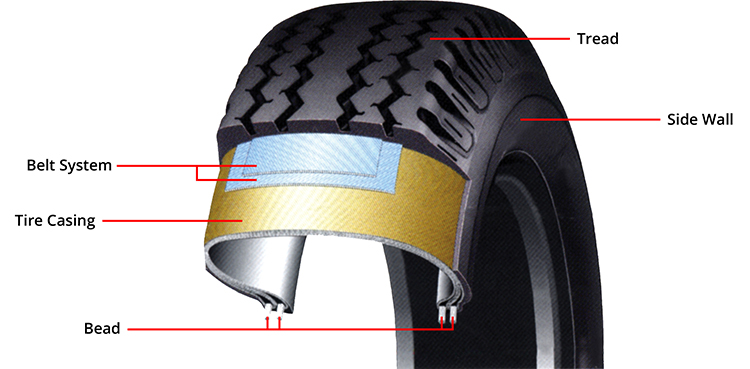 Tires of young, unknown manufacturers, especially Asian ones, will cost even less.
Tires of young, unknown manufacturers, especially Asian ones, will cost even less.
Tires with runflat technology are more expensive than conventional tires, because their sidewalls have special requirements.
Is it worth buying retreaded tires? It is almost impossible to buy such tires for a passenger car in Russia in 2021. The cord design of car tires for projector restoration is not intended, unlike truck tires, for which this is a very popular service. In some countries in Eastern Europe, you can buy retreaded tires in popular sizes, but their properties are mediocre: long braking distances, poor handling.
When is the best time to buy tires? The popular theory that tires are best bought between seasons is no longer relevant. You won’t be able to save money this way: the price of tires almost does not change throughout the year.
The tire business is seasonally cyclical, and it is not worth hoping for discounts on studded tires and its wide selection in June. For the next winter season, it will be delivered in August, and summer tires in March.
For the next winter season, it will be delivered in August, and summer tires in March.
But by the season, the freshest tires will be on sale. This is true for those who drive very little, or for sports tires. The fresher the tire, the better the grip will be: the rubber compound loses its properties over time.
Always make sure that your tire pressure is correct: it is critical to tire health. If you lose pressure, do not continue driving on an empty wheel: this may destroy the tire.
Try not to store tires and the car within half a meter of heaters.
Old tires cannot simply be thrown in the trash or buried. This is hazard class 4 waste, they must be disposed of.
GOST 12.1.007-76
Tires can be sold on Avito or other ad service. It will turn out if there is no serious damage and the tread depth allows them to be used further.
Old tires are readily picked up by a tire shop.